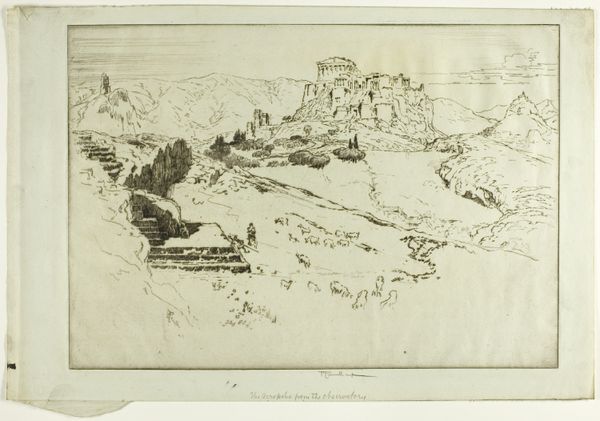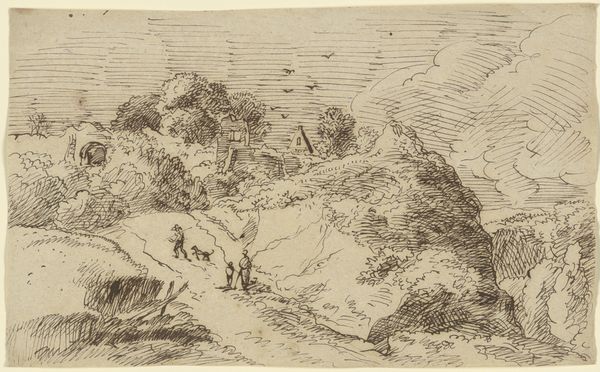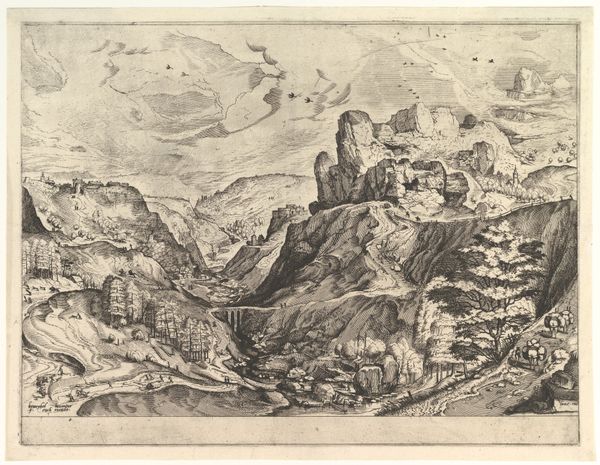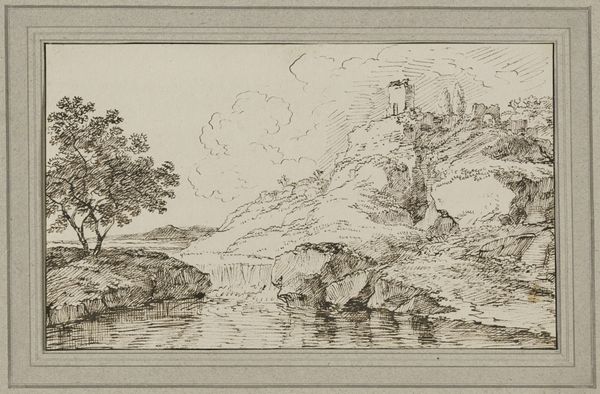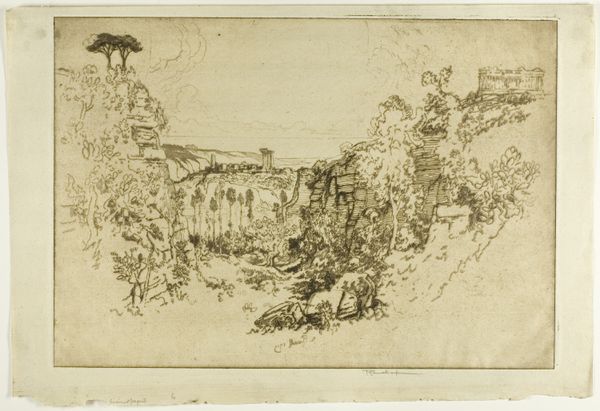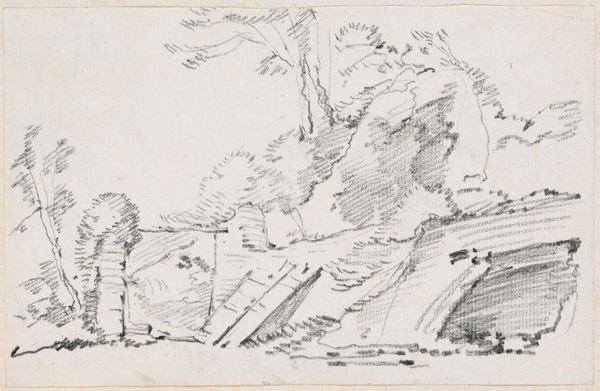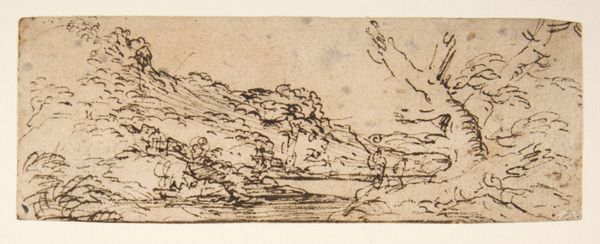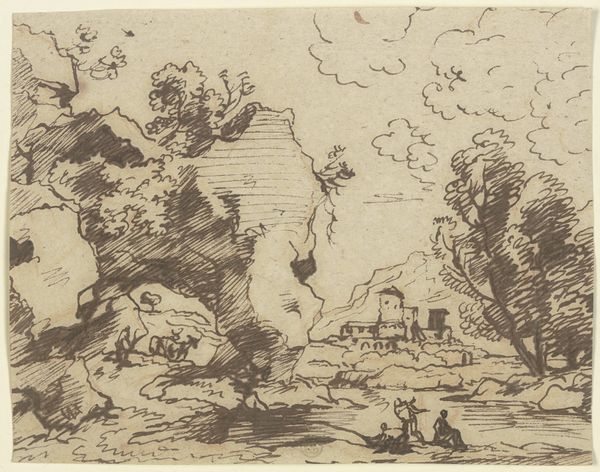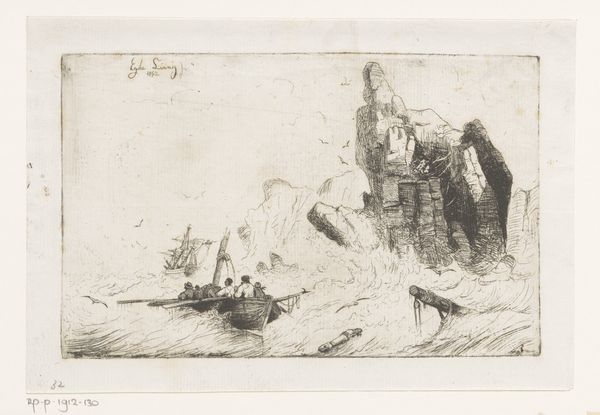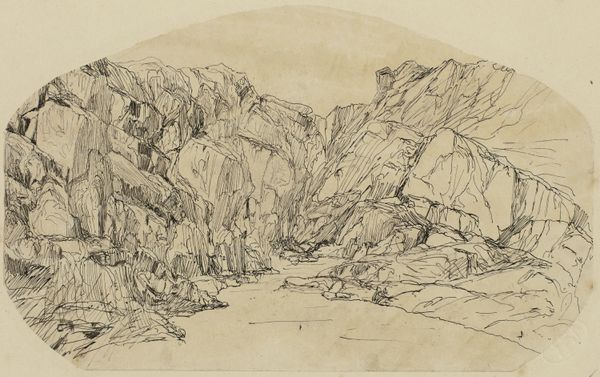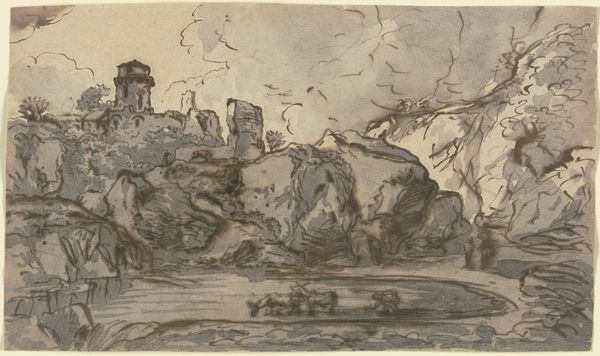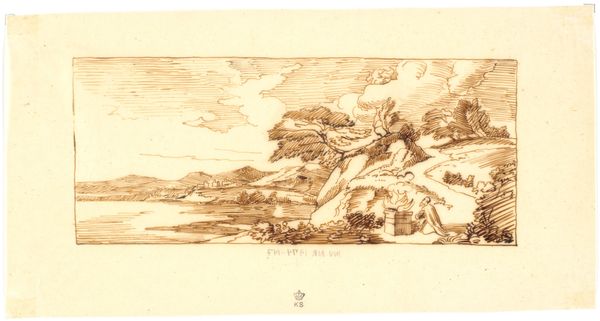
drawing, print, etching, paper
#
drawing
# print
#
etching
#
landscape
#
etching
#
paper
#
modernism
Dimensions: 264 × 379 mm (image); 309 × 443 mm (sheet)
Copyright: Public Domain
Editor: Here we have Joseph Pennell’s "Quarry on Pentelicon," created in 1913 using etching on paper. The landscape depicted seems stark, almost brutal in its depiction of the quarry. How do you interpret this work, especially given its historical context? Curator: Well, seeing this work, I immediately think about the historical tension between industrial progress and environmental degradation. Pennell created this etching during a period of intense industrial expansion, and I see it as a commentary on the exploitation of natural resources. Look at the harsh lines, the way the landscape is rendered almost barren. Do you see any indication of an actual environment or any hint of the people doing the quarrying, or any sign of labor, struggle, or equity? Editor: No, the quarry appears devoid of any human presence or activity. The focus is solely on the ravaged landscape. Curator: Exactly! By omitting human figures, Pennell highlights the sheer power of industry over nature. It makes me wonder, too, about whose hands benefited from the material extracted here. Are we looking at the extraction of resources to benefit local artisans or an extractive industry linked to colonialism, imperialism, or some other political movement? Consider how modernism, even in landscape, reflected anxieties about a rapidly changing world, especially around issues of sustainability and the rights of workers versus industrialists. Editor: So, you are saying the visual harshness is a deliberate choice to underscore the social and environmental impact? Curator: Precisely. It's an active statement about the cost of progress. He wants to make us ask important questions about that cost. Can economic prosperity really justify ecological destruction and potentially exploitative labor? It really asks us, What world are we making? What are we willing to sacrifice? Editor: That reframes the way I see it entirely. Thank you. Curator: My pleasure. It's in those complex contextual layers that art truly starts speaking to the current social landscape, which should inform everything.
Comments
No comments
Be the first to comment and join the conversation on the ultimate creative platform.

